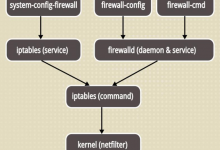Hive的函数
Hive函数分类
函数的定义和java、mysql一样,有三种。
UDF(User Definition Function 用户定义函数)
一路输入,一路输出
sin(30°)=1/2
UDAF(User Definition Aggregation Function 聚合函数)
多路输入,一路输出
max min count sum avg等等
UDTF(User Definition Table Function 表函数)
一路输入,多路输出
explode
常用函数
show functions; 列出hive中可用的函数列表
desc function func_name; 查看函数的帮助说明
case when ---->switch或if else
if ---->三元运算符
explode ---->将数组中的元素转换成多行数据
a = [1, 2, 3, 4] explode(a) ===>
1
2
3
4
split ---->就是字符串中的split函数
array ---->
collect_set
collect_list
concat_ws ---->使用给定的字符串来连接元素
--------------
row_number ---->分组排序或者二次排序
函数案例
wordcount
分析:
hello you
hello me
hello he
使用mr的的过程
step1----->split("\t")--->
["hello", "you"]
["hello", "me"]
["hello", "he"]
step2----->遍历每一个数组,将数组中的每一个值,作为key,value为1写出去<key, 1>
<"hello", 1>
<"you", 1>
<"hello", 1>
<"me", 1>
<"hello", 1>
<"he", 1>
step3,shuffle--->
<"hello", [1, 1, 1]>
<"you", 1>
<"me", 1>
<"he", 1>
step 4, reduce ====>reduceByKey
使用hql
step 1 (mydb1)> select split(line, "\t") from test;
["hello","you"]
["hello","he"]
["hello","me"]
step 2 将数组中的每一行数据转化为多行
(mydb1)> select explode(split(line, "\t")) from test;
hello
you
hello
he
hello
me
step 3 在step2的基础之上进行group by 即可
select
w.word, count(w.word) as count
from (select explode(split(line, "\t")) word from test) w
group by w.word order by count desc;
case when
case when将一下对应的部门名称显示出来:
1--->学工组,2--->行政组,3---->销售组,4---->研发组,5---->其它
hive (mydb1)> select * from t1;
1
2
3
4
5
select
id,
case id
when 1 then "学工组"
when 2 then "行政组"
when 3 then "销售组"
when 4 then "研发组"
else "行政组"
end
from t1;
分类显示
1 学工组
2 行政组
3 销售组
4 研发组
5 其它
row_number 二次排序
三种连接
交叉连接
across join,会有笛卡尔积,所以不用
内连接(等值连接)
inner join
将左表和右表中能够匹配的上的数据做输出
外链接
outer join
左外连接(left outer join)
右外链接(right outer join)
根据员工、部分、薪资,这三张表,
1、分组显示每一个部分员工的信息(启动显示部分名称,员工姓名,员工性别[男|女],员工薪资),同时分组按照员工薪资降序排序
select
e.name, if(sex == 0, '女', '男') as gender, d.name, s.salary,
row_number() over(partition by e.deptid order by s.salary desc) rank
from t_dept d
left join t_employee e on d.id = e.deptid
left join t_salary s on e.id = s.empid
where s.salary is not null;
2、获取显示部门薪资top2的员工信息
select
tmp.*
from
(select
e.name, if(sex == 0, '女', '男') as gender, d.name, s.salary,
row_number() over(partition by e.deptid order by s.salary desc) rank
from t_dept d
left join t_employee e on d.id = e.deptid
left join t_salary s on e.id = s.empid
where s.salary is not null) tmp
where tmp.rank < 3;
如果查询的是单表,则可以不用子查询,只用用having来获取即可(having rank < 3)
直接看下面的一个例子就可以知道row_number的使用方法了:
hive (mydb2)> create table t9(
> id int,
> province string,
> salary float
> );
hive (mydb2)> insert into t9 values(1,'gd',18000),(2,'gd',16000),(3,'bj',13000),(4,'gd',15000),(5,'bj',17000),(6,'bj',19000);
hive (mydb2)> select * from t9;
OK
1 gd 18000.0
2 gd 16000.0
3 bj 13000.0
4 gd 15000.0
5 bj 17000.0
6 bj 19000.0
Time taken: 0.097 seconds, Fetched: 6 row(s)
hive (mydb2)> select
> id,
> province,
> salary,
> row_number() over(partition by province order by salary desc) as rank
> from t9;
OK
6 bj 19000.0 1
5 bj 17000.0 2
3 bj 13000.0 3
1 gd 18000.0 1
2 gd 16000.0 2
4 gd 15000.0 3
Time taken: 1.578 seconds, Fetched: 6 row(s)
Hive自定义函数
自定义函数步骤
自定义函数需要遵循的6个步骤:
1°、自定义一个Java类来继承UDF类
2°、覆盖其中的evaluate()的函数,有系统去调用
3°、将写好的程序打成一个jar,上传至服务器
4°、将3°中的jar加载到hive的classpath
hive终端执行add jar jar_path;
5°、给自定义函数设置一个临时的名称,也就是说要创建一个临时的函数
create temporary function 函数名 as '写的evalutor所在类的全类名';
6°、执行函数结束之后,可以手动销毁临时函数,或者不用管,因为当前会话消失,函数自动销毁
UDF案例:要根据用户的birthday,统计对应的×××和星座
程序代码如下:
package com.uplooking.bigdata.hive.udf;
import org.apache.hadoop.hive.ql.exec.Description;
import org.apache.hadoop.hive.ql.exec.UDF;
import org.apache.hadoop.io.Text;
import java.text.ParseException;
import java.text.SimpleDateFormat;
import java.util.Calendar;
import java.util.Date;
@Description(name = "z_c",
value = "_FUNC_(param1, param2) - 返回给定日期对应的×××或者星座",
extended = "param1,param2参数可以是一下:\n"
+ "1. param1 is A string in the format of 'yyyy-MM-dd HH:mm:ss' or 'yyyy-MM-dd'.\n"
+ "2. param1 date value\n"
+ "3. param1 timestamp value\n"
+ "3. param2 0 or 1, 0 means constellation, 1 means zodica\n"
+ "Example:\n "
+ " > SELECT _FUNC_('2009-07-30', 0) FROM src LIMIT 1;\n" + " 狮子座")
public class ZodicaAndConstellationUDF extends UDF {
public Text evaluate(java.sql.Date date, int type) {
if(type == 0) {//星座
return new Text(getConstellation(new Date(date.getTime())));
} else if(type == 1) { //×××
return new Text(getZodica(new Date(date.getTime())));
}
return null;
}
public String[] zodiacArr = { "猴", "鸡", "狗", "猪", "鼠", "牛", "虎", "兔", "龙", "蛇", "马", "羊" };
public String[] constellationArr = { "水瓶座", "双鱼座", "白羊座", "金牛座", "双子座", "巨蟹座", "狮子座", "×××座", "天秤座", "天蝎座", "射手座", "魔羯座" };
public int[] constellationEdgeDay = { 20, 19, 21, 21, 21, 22, 23, 23, 23, 23, 22, 22 };
/**
* 根据日期获取×××
* @return
*/
public String getZodica(Date date) {
Calendar cal = Calendar.getInstance();
cal.setTime(date);
return zodiacArr[cal.get(Calendar.YEAR) % 12];
}
/**
* 根据日期获取星座
* @return
*/
public String getConstellation(Date date) {
if (date == null) {
return "";
}
Calendar cal = Calendar.getInstance();
cal.setTime(date);
int month = cal.get(Calendar.MONTH);
int day = cal.get(Calendar.DAY_OF_MONTH);
if (day < constellationEdgeDay[month]) {
month = month - 1;
}
if (month >= 0) {
return constellationArr[month];
}
// default to return 魔羯
return constellationArr[11];
}
}
注意依赖在笔记最后面。
上传到服务器后,在hive终端中加载到hive的classpath:
add jar /home/uplooking/jars/hive/udf-zc.jar
自定义函数:
create temporary function zc as 'com.uplooking.bigdata.hive.udf.ZodicaAndConstellationUDF';
创建测试用的临时表:
hive (mydb1)>
> create temporary table tmp(
> birthday date);
插入测试用的数据:
hive (mydb1)> insert into tmp values('1994-06-21');
在查询中使用函数:
hive (mydb1)> select zc(birthday,0) from tmp;
OK
c0
双子座
Time taken: 0.084 seconds, Fetched: 1 row(s)
hive (mydb1)> select zc(birthday,1) from tmp;
OK
c0
狗
Time taken: 0.044 seconds, Fetched: 1 row(s)
下面是一个更简单的UDF函数,可以参考进行测试:
package cn.xpleaf.hive.udf;
import org.apache.hadoop.hive.ql.exec.Description;
import org.apache.hadoop.hive.ql.exec.UDF;
import org.apache.hadoop.io.Text;
/**
* @author Leaf
* @date 2018/9/18 下午11:11
*/
@Description(name = "addUDF", value = "_FUNC_(num1, num2) - 返回给定两个数的和")
public class AddUDF extends UDF {
public Text evaluate(int num1, int num2) {
return new Text(String.valueOf(num1 + num2));
}
}
Hive之jdbc
Hive除了提供前面的cli用户接口,还提供了jdbc的用户接口,但是如果需要使用该接口,则需要先启动hiveserver2服务,启动该服务后,可以通过hive提供的beeline继续以cli的方式操作hive(不过需要注意的是,此时是通过jdbc接口进行操作hive的),也可以通过手工编写java代码来进行操作。
启动hiveserver2服务
[uplooking@uplooking01 ~]$ hiveserver2
通过beeline连接hiveserver进行操作
[uplooking@uplooking01 hive]$ beeline
which: no hbase in (/usr/local/bin:/bin:/usr/bin:/usr/local/sbin:/usr/sbin:/sbin:/opt/jdk/bin:/home/uplooking/bin:/home/uplooking/app/zookeeper/bin:/home/uplooking/app/hadoop/bin:/home/uplooking/app/hadoop/sbin:/home/uplooking/app/hive/bin)
ls: 无法访问/home/uplooking/app/hive/lib/hive-jdbc-*-standalone.jar: 没有那个文件或目录
Beeline version 2.1.0 by Apache Hive
beeline> !connect jdbc:hive2://uplooking01:10000/mydb1
Connecting to jdbc:hive2://uplooking01:10000/mydb1
Enter username for jdbc:hive2://uplooking01:10000/mydb1: uplooking
Enter password for jdbc:hive2://uplooking01:10000/mydb1: *********
SLF4J: Class path contains multiple SLF4J bindings.
SLF4J: Found binding in [jar:file:/home/uplooking/app/hive/lib/log4j-slf4j-impl-2.4.1.jar!/org/slf4j/impl/StaticLoggerBinder.class]
SLF4J: Found binding in [jar:file:/home/uplooking/app/hadoop/share/hadoop/common/lib/slf4j-log4j12-1.7.5.jar!/org/slf4j/impl/StaticLoggerBinder.class]
SLF4J: See http://www.slf4j.org/codes.html#multiple_bindings for an explanation.
SLF4J: Actual binding is of type [org.apache.logging.slf4j.Log4jLoggerFactory]
Error: Failed to open new session: java.lang.RuntimeException: org.apache.hadoop.ipc.RemoteException(org.apache.hadoop.security.authorize.AuthorizationException): User: uplooking is not allowed to impersonate uplooking (state=,code=0)
可以看到出现错误,解决方案如下:
在执行JDBC的时候,访问不了远程的Hive的ThriftServer服务
报的错误:uplooking不能伪装为uplooking
是因为版本在进行升级的时候考虑到的安全策略,需要我们手动对uplooking进行配置,需要将
hadoop中的uplooking用户和hive中的uplooking用户进行打通,配置在$HADOOP_HOME/etc/hadoop/core-site.xml
中进行配置:添加一下配置项
<property>
<name>hadoop.proxyuser.uplooking.hosts</name>
<value>*</value>
<description>这是uplooking用户访问的本机地址</description>
</property>
<property>
<name>hadoop.proxyuser.uplooking.groups</name>
<value>root</value>
<description>代理uplooking设置的组用户</description>
</property>
配置成功之后,需要同步到集群中的各个节点,
要想让集群重新加载配置信息,至少hdfs需要重启
这样之后就可以正常使用beeline通过hive提供的jdbc接口来操作hive了:
beeline> !connect jdbc:hive2://uplooking01:10000/mydb1
Connecting to jdbc:hive2://uplooking01:10000/mydb1
Enter username for jdbc:hive2://uplooking01:10000/mydb1: uplooking
Enter password for jdbc:hive2://uplooking01:10000/mydb1: *********
SLF4J: Class path contains multiple SLF4J bindings.
SLF4J: Found binding in [jar:file:/home/uplooking/app/hive/lib/log4j-slf4j-impl-2.4.1.jar!/org/slf4j/impl/StaticLoggerBinder.class]
SLF4J: Found binding in [jar:file:/home/uplooking/app/hadoop/share/hadoop/common/lib/slf4j-log4j12-1.7.5.jar!/org/slf4j/impl/StaticLoggerBinder.class]
SLF4J: See http://www.slf4j.org/codes.html#multiple_bindings for an explanation.
SLF4J: Actual binding is of type [org.apache.logging.slf4j.Log4jLoggerFactory]
Connected to: Apache Hive (version 2.1.0)
Driver: Hive JDBC (version 2.1.0)
18/03/23 08:00:15 [main]: WARN jdbc.HiveConnection: Request to set autoCommit to false; Hive does not support autoCommit=false.
Transaction isolation: TRANSACTION_REPEATABLE_READ
0: jdbc:hive2://uplooking01:10000/mydb1> show databases;
+----------------+--+
| database_name |
+----------------+--+
| default |
| mydb1 |
+----------------+--+
2 rows selected (2.164 seconds)
0: jdbc:hive2://uplooking01:10000/mydb1> show tables;
+-----------+--+
| tab_name |
+-----------+--+
| t1 |
| t2 |
+-----------+--+
2 rows selected (0.118 seconds)
0: jdbc:hive2://uplooking01:10000/mydb1> select * from t1;
+------------+--+
| t1.line |
+------------+--+
| hello you |
| hello he |
| hello me |
+------------+--+
3 rows selected (2.143 seconds)
0: jdbc:hive2://uplooking01:10000/mydb1>
通过java代码连接hiveserver进行操作
程序代码如下:
package com.uplooking.bigdata.hive.jdbc;
import java.sql.*;
public class HiveJDBC {
public static void main(String[] args) throws Exception {
Class.forName("org.apache.hive.jdbc.HiveDriver");
Connection conn = DriverManager.getConnection("jdbc:hive2://uplooking01:10000/mydb1", "uplooking", "uplooking");
String sql = "select t.word,count(t.word) as count from (select explode(split(line, ' ')) as word from t1) t group by t.word";
PreparedStatement ps = conn.prepareStatement(sql);
ResultSet rs = ps.executeQuery();
while (rs.next()) {
String word = rs.getString("word");
int count = rs.getInt("count");
System.out.println(word + "\t" + count);
}
rs.close();
ps.close();
conn.close();
}
}
程序执行结果如下:
18/03/23 00:48:16 INFO jdbc.Utils: Supplied authorities: uplooking01:10000
18/03/23 00:48:16 INFO jdbc.Utils: Resolved authority: uplooking01:10000
he 1
hello 3
me 1
you 1
在这个过程中,注意观察hiveserver2终端的输出:
WARNING: Hive-on-MR is deprecated in Hive 2 and may not be available in the future versions. Consider using a different execution engine (i.e. spark, tez) or using Hive 1.X releases.
Query ID = uplooking_20180323084825_63044683-393d-4625-a3c3-b440109c3d70
Total jobs = 1
Launching Job 1 out of 1
Number of reduce tasks not specified. Estimated from input data size: 1
In order to change the average load for a reducer (in bytes):
set hive.exec.reducers.bytes.per.reducer=<number>
In order to limit the maximum number of reducers:
set hive.exec.reducers.max=<number>
In order to set a constant number of reducers:
set mapreduce.job.reduces=<number>
Starting Job = job_1521765850571_0002, Tracking URL = http://uplooking02:8088/proxy/application_1521765850571_0002/
Kill Command = /home/uplooking/app/hadoop/bin/hadoop job -kill job_1521765850571_0002
Hadoop job information for Stage-1: number of mappers: 1; number of reducers: 1
2018-03-23 08:48:33,427 Stage-1 map = 0%, reduce = 0%
2018-03-23 08:48:40,864 Stage-1 map = 100%, reduce = 0%, Cumulative CPU 3.54 sec
2018-03-23 08:48:48,294 Stage-1 map = 100%, reduce = 100%, Cumulative CPU 6.84 sec
MapReduce Total cumulative CPU time: 6 seconds 840 msec
Ended Job = job_1521765850571_0002
MapReduce Jobs Launched:
Stage-Stage-1: Map: 1 Reduce: 1 Cumulative CPU: 6.84 sec HDFS Read: 8870 HDFS Write: 159 SUCCESS
Total MapReduce CPU Time Spent: 6 seconds 840 msec
OK
Hive中文注释乱码解决
如果有乱码出现,可以尝试下面的解决方案:
hive中文注释乱码解决:
在hive的元数据库中,执行一下脚本
ALTER TABLE COLUMNS_V2 MODIFY COLUMN COMMENT VARCHAR(256) CHARACTER SET utf8;
ALTER TABLE TABLE_PARAMS MODIFY COLUMN PARAM_VALUE VARCHAR(4000) CHARACTER SET utf8;
ALTER TABLE PARTITION_PARAMS MODIFY COLUMN PARAM_VALUE VARCHAR(4000) CHARACTER SET utf8;
ALTER TABLE PARTITION_KEYS MODIFY COLUMN PKEY_COMMENT VARCHAR(4000) CHARACTER SET utf8;
ALTER TABLE INDEX_PARAMS MODIFY COLUMN PARAM_VALUE VARCHAR(4000) CHARACTER SET utf8;
同时将url,加上utf-8
&useUnicode=true&characterEncoding=UTF-8
<property>
<name>javax.jdo.option.ConnectionURL</name>
<value>jdbc:mysql://uplooking01:3306/hive?createDatabaseIfNotExist=true&useUnicode=true&characterEncoding=UTF-8</value>
</property>
Hive的maven依赖
<properties>
<project.build.sourceEncoding>UTF-8</project.build.sourceEncoding>
<hive-api.version>2.1.0</hive-api.version>
<hadoop-api.version>2.6.4</hadoop-api.version>
<hadoop-core.version>1.2.1</hadoop-core.version>
</properties>
<dependencies>
<dependency>
<groupId>junit</groupId>
<artifactId>junit</artifactId>
<version>4.12</version>
<scope>test</scope>
</dependency>
<dependency>
<groupId>org.apache.hadoop</groupId>
<artifactId>hadoop-common</artifactId>
<version>${hadoop-api.version}</version>
</dependency>
<dependency>
<groupId>org.apache.hadoop</groupId>
<artifactId>hadoop-mapreduce-client-core</artifactId>
<version>${hadoop-api.version}</version>
</dependency>
<dependency>
<groupId>org.apache.hadoop</groupId>
<artifactId>hadoop-core</artifactId>
<version>${hadoop-core.version}</version>
</dependency>
<dependency>
<groupId>org.apache.hive</groupId>
<artifactId>hive-exec</artifactId>
<version>${hive-api.version}</version>
</dependency>
<dependency>
<groupId>org.apache.hive</groupId>
<artifactId>hive-serde</artifactId>
<version>${hive-api.version}</version>
</dependency>
<dependency>
<groupId>org.apache.hive</groupId>
<artifactId>hive-service</artifactId>
<version>${hive-api.version}</version>
</dependency>
<dependency>
<groupId>org.apache.hive</groupId>
<artifactId>hive-metastore</artifactId>
<version>${hive-api.version}</version>
</dependency>
<dependency>
<groupId>org.apache.hive</groupId>
<artifactId>hive-common</artifactId>
<version>${hive-api.version}</version>
</dependency>
<dependency>
<groupId>org.apache.hive</groupId>
<artifactId>hive-cli</artifactId>
<version>${hive-api.version}</version>
</dependency>
<dependency>
<groupId>org.apache.hive</groupId>
<artifactId>hive-jdbc</artifactId>
<version>${hive-api.version}</version>
</dependency>
<dependency>
<groupId>org.apache.thrift</groupId>
<artifactId>libfb303</artifactId>
<version>0.9.0</version>
</dependency>
</dependencies>


 Asynq任务框架
Asynq任务框架 MCP智能体开发实战
MCP智能体开发实战 WEB架构
WEB架构 安全监控体系
安全监控体系



